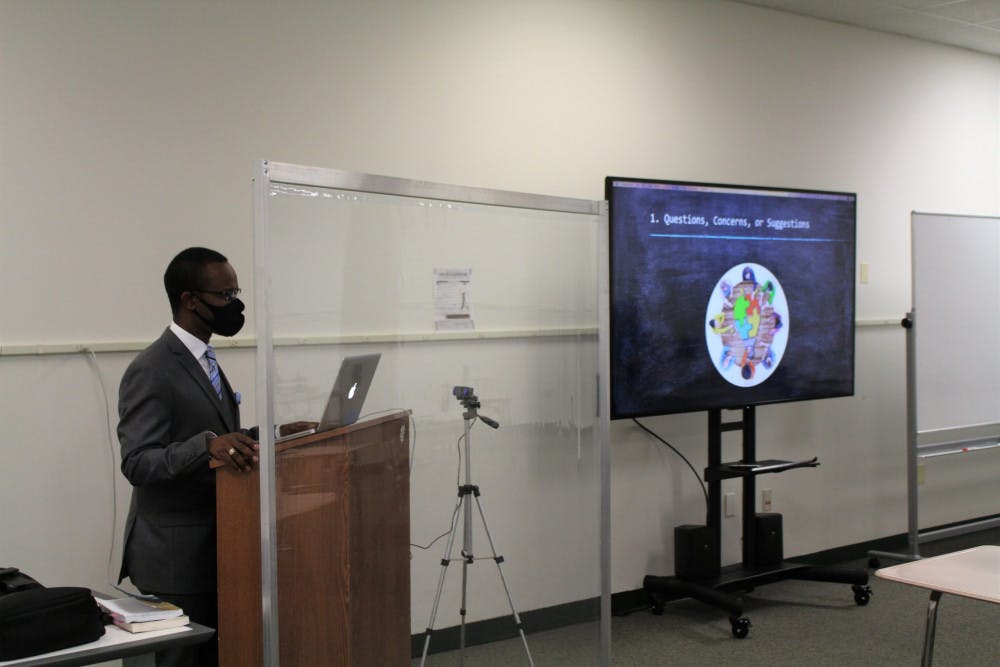By Victoria Rossi
Now that some students have returned to campus for the fall semester, professors are adapting to the new teaching formats implemented by Seton Hall to limit the spread of COVID-19.
Professors are teaching their classes either through the HyFlex model, a combination of in-person and online learning, or fully online. They are using tools such as Microsoft Teams and Blackboard to hold their lectures.
All professors attended training sessions from the Teaching, Learning and Technology Center.
For David Laviska, an assistant professor in the Department of Chemistry and Biochemistry, HyFlex teaching is a new frontier.
“In the beginning, I just did my best to try and figure out how best to get the information to the students and in as thorough of a fashion as I could,” Laviska said. “I had to immediately learn all sorts of new modalities that I have never used.”
Laviska also had to organize the lab classes for General Chemistry. The lab classes allow only 16 students per lab room. The students are put into two groups with each student having a lab partner in the other group. One student attends the lab in person, while the partner attends remotely on Teams. Every week, the partners switch who is in-person and who is remote.
Laviska described what he misses about teaching in-person.
“I miss looking into their eyes to see if they’re understanding what I’m talking about or not,” Laviska said. “I miss seeing the looks of happiness when they understand something and the looks of confusion when they don’t understand something.”
Dr. Kirk Johnson, who teaches Contemporary Moral Issues, attended meetings organized by Dr. Ki Joo Choi, an associate professor and chair of the religion department, to complete training in preparation for the semester.
Johnson, an alumnus of the class of 2009, said he misses the “very interactive and communal” university. He said teaching in-person creates a “special and different environment” for him since he is an alumnus.
“I have been in the desks and walked in the shoes of current students,” Johnson said.
Matthew Pressman, an assistant professor of journalism, decided to teach in the HyFlex format because he said he understands that “it’s the preference of a lot of students.” Pressman said that the biggest benefit of HyFlex is the flexibility that it gives students, which helps with attendance.
“I never got such good attendance with in-person classes,” Pressman said.
Pressman said he wants to make his classes as interactive as possible, having more discussions than lectures so that his students can participate more.
Laviska also said he noticed an increase in interaction. He said he feels like “students are much less shy about interacting in the remote format than they would be in a big room.”
“Students seem to be very happy to post questions in the chat windows of the remote learning platforms and even answer each other’s questions before I get to them while I’m lecturing,” Laviska said.
Johnson shared advice for professors who are teaching during the COVID-19 pandemic.
“Keep going to training,” Johnson said. “Do the best you can with the knowledge you have about technology and make it the best experience for students as possible.”Victoria Rossi can be reached at victoria.rossi@student.shu.edu.





